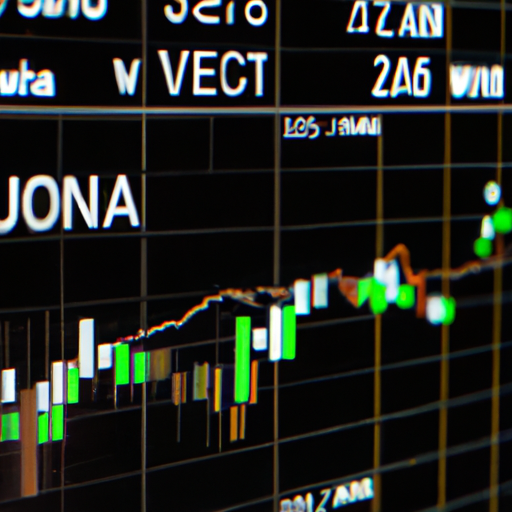Understanding The Dow Jones Futures Chart: A Comprehensive Guide
The Dow Jones Futures Chart is an essential tool for traders who want to anticipate the future movement of the Dow Jones Industrial Average (DJIA).
Knowing how to read this chart can provide valuable insights into market trends and help in making informed trading decisions.
In this article, we’ll take a deep dive into the components and nuances of the Dow Jones Futures Chart.
We’ll cover its importance, how to interpret it, and practical strategies for leveraging it in your trading.
What Is The Dow Jones Futures Chart?
Before diving into the nitty-gritty, let’s first understand what the Dow Jones Futures Chart actually is.
Futures contracts are agreements to buy or sell an asset at a predetermined price at a specified time in the future.
The Dow Jones Futures specifically track the performance of the DJIA, allowing traders to speculate on its future direction.
These charts display this data visually, making it easier for traders to analyze trends and make predictions.
Components Of The Dow Jones Futures Chart
To effectively use a Dow Jones Futures Chart, you need to understand its key components:
– Price Levels: These are marked on the vertical axis and show how much one unit of the futures contract costs.
– Time Intervals: Displayed on the horizontal axis, these intervals could range from minutes to months.
– Candlestick Patterns: These patterns represent price movements within each time interval and are crucial for technical analysis.
– Volume Indicators: These show how many contracts have been traded within each time interval, providing insight into market sentiment.
By becoming familiar with these elements, you can start interpreting what they indicate about market trends.
The Importance Of Candlestick Patterns
Candlestick patterns are vital when analyzing any futures chart, including the Dow Jones Futures Chart.
They offer visual cues about market psychology by displaying open, high, low, and close prices for each time interval.
Recognizing common candlestick patterns can give you an edge in predicting market movements.
For instance:
– Doji Candlestick: Indicates indecision in the market.
– Hammer Candlestick: Often signals a potential reversal from a downtrend.
– Engulfing Pattern: Suggests strong momentum either bullish or bearish depending on whether it’s bullish engulfing or bearish engulfing.
By mastering these patterns, traders can gain insights that might not be immediately obvious from just looking at price levels and volumes alone.
How To Read The Dow Jones Futures Chart
Reading a Dow Jones Futures Chart effectively requires practice and understanding of technical analysis principles.
Here’s a step-by-step approach:
Identify Key Support And Resistance Levels
Support levels are price points where downward price movements tend to pause due to increased buying interest.
Resistance levels work oppositely; they’re where upward movements stall due to selling pressure.
Marking these levels on your chart helps set realistic entry and exit points for trades.
Analyze Trend Lines
Trend lines connect significant highs or lows over time and help identify prevailing market directions.
An upward trend line connecting higher lows suggests bullish sentiment.
Conversely, a downward trend line indicates bearish conditions.
Use these lines as guides for making trading decisions aligned with current trends.
Use Technical Indicators
Indicators like Moving Averages (MA), Relative Strength Index (RSI), and Bollinger Bands can add another layer of depth to your analysis.
Moving Averages smooth out price data over specified periods helping identify trends more clearly.
RSI measures momentum offering clues about overbought or oversold conditions.
Bollinger Bands provide volatility insights by depicting standard deviations around moving averages.
By combining these tools with candlestick pattern recognition mentioned earlier – you’ll have a robust toolkit for interpreting any futures chart effectively!
Practical Strategies For Trading With Dow Jones Futures Charts
Understanding theory is one thing; applying it successfully in live markets is another challenge altogether!
Here we outline several strategies incorporating knowledge gained so far – ensuring you’re well-prepared when putting theory into practice:
The Breakout Strategy
A breakout occurs when prices move outside predefined support/resistance zones usually accompanied by increased volume indicating strong conviction behind move!
Steps include:
1) Identify key support/resistance zones using historical data/candlesticks patterns,
2) Wait till prices break out above/below these zones,
3) Confirm breakout via volume spikes before entering trades targeting next logical resistance/support zone respectively!
This strategy works best during highly volatile periods where sharp moves likely occur frequently!
The Mean Reversion Strategy
Mean reversion assumes prices eventually revert back towards average values after extreme deviations!
Steps include:
1) Calculate average value using Moving Averages/Bollinger Bands,
2) Look out extreme deviations beyond 1/2 standard deviations away from avg value,
3) Enter opposite trade assuming reversion towards mean value soon enough!
This strategy excels during low volatility periods characterized by range-bound movements lacking strong directional bias!
Remember always combine multiple indicators/patterns confirming each other before committing capital any single trade idea thereby minimizing risks involved significantly!.
Risk Management When Trading Dow Jones Futures Charts
Risk management crucial part successful trading irrespective instrument involved including Dow Jones Future Charts!
Here few tips ensuring risk remains controlled manageable throughout trading journey:
Set Stop-Loss Orders:
Always place stop-loss orders limiting maximum loss any single trade thereby protecting overall capital base effectively avoiding catastrophic losses wiping entire account overnight!.
Diversify Portfolio:
Never put all eggs one basket instead spread risks across different instruments/sectors reducing impact adverse events affecting particular segment alone significantly!.
Avoid Overleveraging:
Leverage double-edged sword amplifying both gains losses equally hence avoid excessive leverage ensure sustainable growth long run without undue stress unnecessary risks taken unnecessarily!.
Following disciplined approach managing risks diligently goes long way ensuring consistent profitability ultimately achieving desired financial goals successfully!.
In conclusion – mastering art reading/interpreting DowJones Future Charts combined effective practical strategies along sound risk management principles undoubtedly pave path towards successful trading career filled rewarding experiences exciting opportunities abound every corner waiting explore discover new horizons beyond imagination!.

